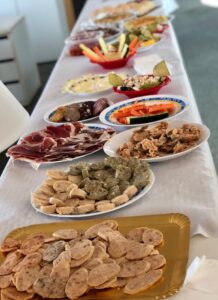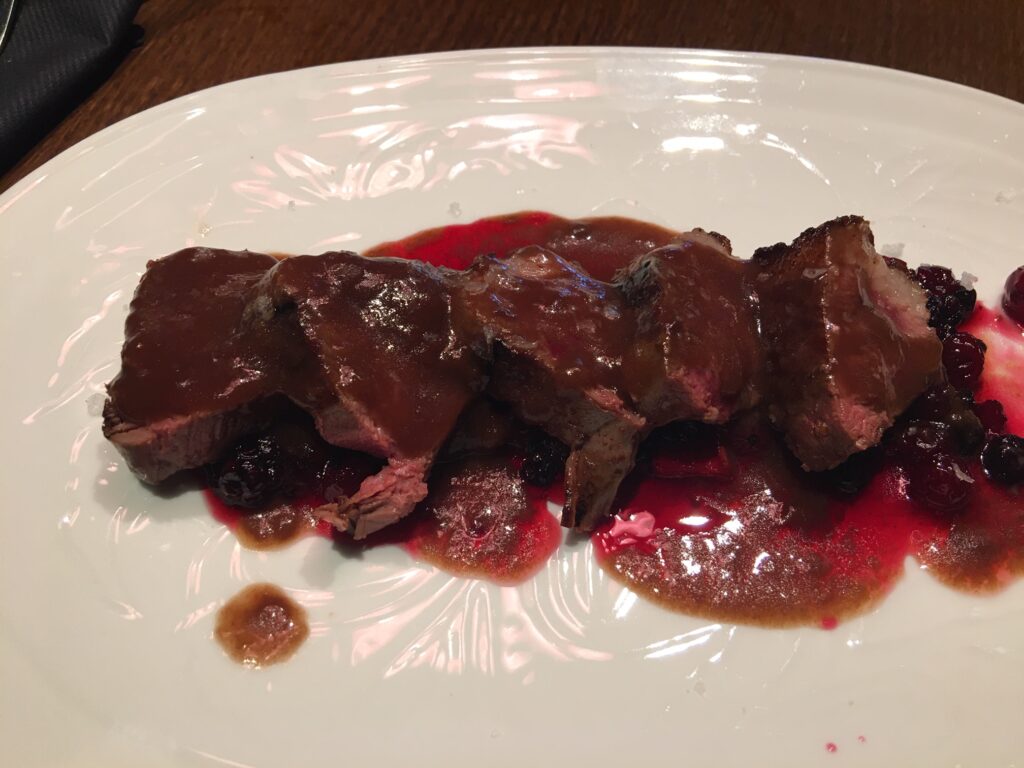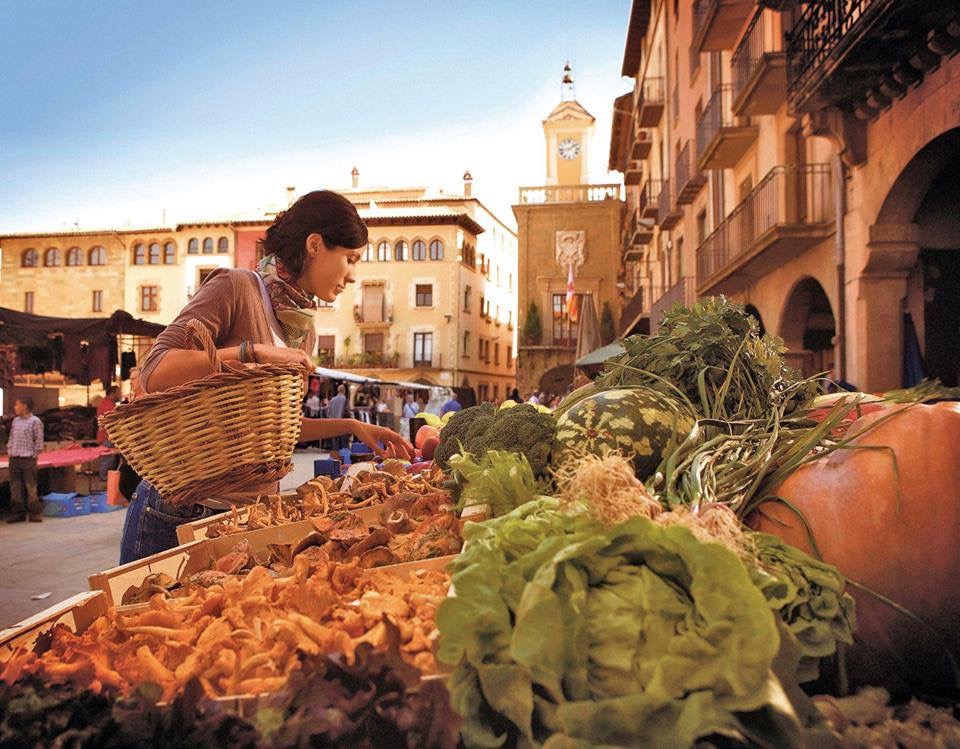Tasting and enjoying the culinary products of a country is like exploring all its traditions at once. In recent years, gastronomy has become essential for understanding the culture and way of life of a territory. Gastronomy represents an opportunity to boost and diversify tourism, promote local economic development, involve various professional sectors (producers, chefs, markets, etc.), and incorporate new uses into the primary sector. The role of gastronomy in the choice of destinations and tourist consumption is the result of the growth of a cuisine based on quality local products and the consolidation of its own gastronomic tourism market.
Gastronomic tourism focuses on food as an attraction for exploration and a tourist destination. Although food has always been part of hospitality services for tourists, it was not emphasized in the tourism industry until the late 1990s. It now includes a variety of formats and products, such as gastronomic routes, cooking classes, restaurants, weekends on farms, cookbooks, gastronomic guides, and new or adapted recipes, dishes, and ingredients.
Discovering a country’s food and drink; exploring its market stalls; buying, tasting, and conversing with culinary experts; exploring wine routes… all of this is gastronomic tourism. Gastronomy can greatly boost a country’s economy. France learned this some time ago, and Italy applies it with brilliant results. The real direct and indirect impact of the restaurant business goes far beyond what one might have originally thought. Eating as a leisure activity.
The Mediterranean coast of Spain is a popular tourist destination for those seeking beach vacations and high-quality food and wine. You have probably heard about the benefits of the Spanish Mediterranean diet, which has become very popular in recent years thanks to magazine and newspaper articles and trendy diet books. It includes a wide variety of seasonal fruits and vegetables, quality meat and cheese, legumes, fish, and seafood products. Almost every meal is accompanied by a delicious glass of wine.

Catalonia offers a wide range of gastronomic activities. It is a country with traditions that date back over a thousand years, a land with its own culture and language that enjoys a mild Mediterranean climate and unparalleled natural diversity. It is a country built on a wealth of contrasts that make Catalonia’s customs, traditions, and people absolutely unique. Stepping into Catalan territory is immersing oneself in an unimaginable sea of possibilities: discovering charming villages, communing with nature, exploring architectural heritage, music, and deeply rooted country traditions, conducting business, or simply relaxing by the sea. The characteristics that set Catalonia apart from the rest are also evident in the culinary culture of the region, which combines sea and mountain, tradition and innovation, and a wealth of high-quality local products.
Another highly relevant aspect of Spanish gastronomy is undoubtedly its wines. Whites, rosés, reds, sherries, cavas, or sparkling wines pair perfectly with specific dishes. Spain is one of the world’s major wine producers, with over 900,000 hectares of vineyards and a great variety of grape varieties. In fact, vine cultivation has become an art form in Spain. Wine tourism goes beyond wine tasting. It is an experience that takes you to sleep among vineyards, visit centuries-old wineries, receive classes from expert sommeliers, and enjoy a diverse range of wine tourism offerings.
GASTRONOMY AND WINE TOURISM
Another advantage of wine tourism in Spain is that it can be easily combined with Spain’s excellent gastronomy. Spanish cuisine is considered one of the best in the world for its quality and variety. In fact, Spain is home to the best restaurant in the world, El Celler de Can Roca in Girona. Each region has its own local cuisine, which is best understood when combined with the wines of their respective regions. A sure way to enjoy local food with its wine is to treat yourself to a lunch at a winery. Many wineries and cellars already offer guided tours and associated activities. The only difficulty, if time is limited, will be choosing the gastronomic or wine tourism route among all the different possibilities.
Profile of the Gastronomic Tourist
Gastronomic tourism diversifies the tourism model of consolidated destinations where other types of tourism, such as sun and beach tourism, predominate, while offering an opportunity for deseasonalisation. Most gastronomic tourists make at least one trip per season and the distribution of the flows of these tourists avoids overcrowding in saturated areas or excessive concentration of visitors at certain times of the year.
The gastronomy plays an increasingly relevant role in the tourism developmentlays an increasingly relevant role in the tourism development of the regions of Barcelona. Its experiential aspect and the visitors’ need to eat make gastronomy, in addition to adding value to different tourism proposals, an opportunity to showcase indigenous and unique aspects of our territory’s culture. There seems to be a certain consensus in considering gastronomy as a resource with high tourism value, but there are still very few studies analysing the profile of the gastronomic tourist.
Understanding the relationship between gastronomy and visitors to the region is essential for properly structuring gastronomic tourism products, as well as for establishing the most suitable promotion and communication strategies. The primary motivation for the comprehensive gastronomic visitor’s journey is to experience the gastronomy of a region in the broadest sense of the word, to consume the destination’s culture.
This visitor is interested in getting to know, experience, purchase, and taste the region’s gastronomy, and values its connection with the landscape, history, and gastronomic traditions of the region. This type of visitor is also defined as a tourist who spends more on meals than any other type of visitor.

Gastronomy and Traditions
Wise people say that “we are what we eat,” and the reflection of society is found in everyone’s cuisine. In Catalonia, a unique history has been forged around the stoves since ancient times, leaving behind an invaluable cultural legacy and becoming the foundation of one of the world’s best cuisines due to the richness and variety of its food. The history of Catalan cuisine dates back to the very creation of this small country, and its ability to incorporate the best cuisine it has come into contact with over the centuries. Thanks to these historical links and taking advantage of the possibilities offered by dishes from around the world, Catalan cuisine has become a gastronomic model. With products from the Mediterranean region, Catalan cuisine has been shaped as a true reflection of the people who have cultivated and made it possible, becoming an essential part of the cultural fabric of the Catalan people. A “tangible museum” of the skills of its people worldwide, the result of this objective is to enjoy a recipe that conveys the values and know-how of the Catalans, helping to define their own identity and leading Catalonia to be considered one of the ultimate cultural references. Catalan cuisine is also synonymous with tradition and deeply rooted customs of the people. Linking regional food with celebrations and cultural traditions is closely intertwined, but it is precisely this characteristic that distinguishes Catalan identity from many of the main economic benchmarks and social leaders when it comes time to sit around the table and share a good meal with family and friends.
Gastronomic tourism not only attracts quality tourists, who are more willing to spend and more respectful of local culture, but it has also become a significant factor in the competitiveness of tourist destinations, playing a decisive role in their image and positioning. Gastronomic tourism is recognized as one of the most important emerging segments in the tourism industry. Travel, production, tasting, and culture come together in a growing travel modality identified as a significant market trend.

Preferred Gastronomic Destinations
Among the favourite gastronomic destinations for Spaniards are regions or cities that have already made gastronomy a key strategic line within their tourism model and have created tourism products based on the authenticity of their gastronomic heritage. At the regional level, apart from Catalonia, Andalusia, Galicia, the Basque Country, and Asturias also appear as preferred autonomous communities for tourists and visitors when it comes to gastronomic trips or getaways. Regarding the favourite cities and municipalities for gastronomic tourists, San Sebastián, Madrid, Barcelona, Bilbao, and Logroño stand out, making up the top 5 preferred gastronomic destinations. However, it is also worth mentioning the high number of mentions that some municipalities or regions within the Catalan territory have received, which, beyond the major provincial capitals, are becoming true meccas of gastronomy.Principio del formulario
Transport made to measure for the needs of the gastronomic tourist.
Esteve Business Cars has a fleet of vehicles with different capacities that allow tourists and visitors to enjoy the comfort of the trip and its gastronomic programme.
Private vehicles with driver, Minivans and Minibuses and Coaches with an exclusive and very corporate interior design.


